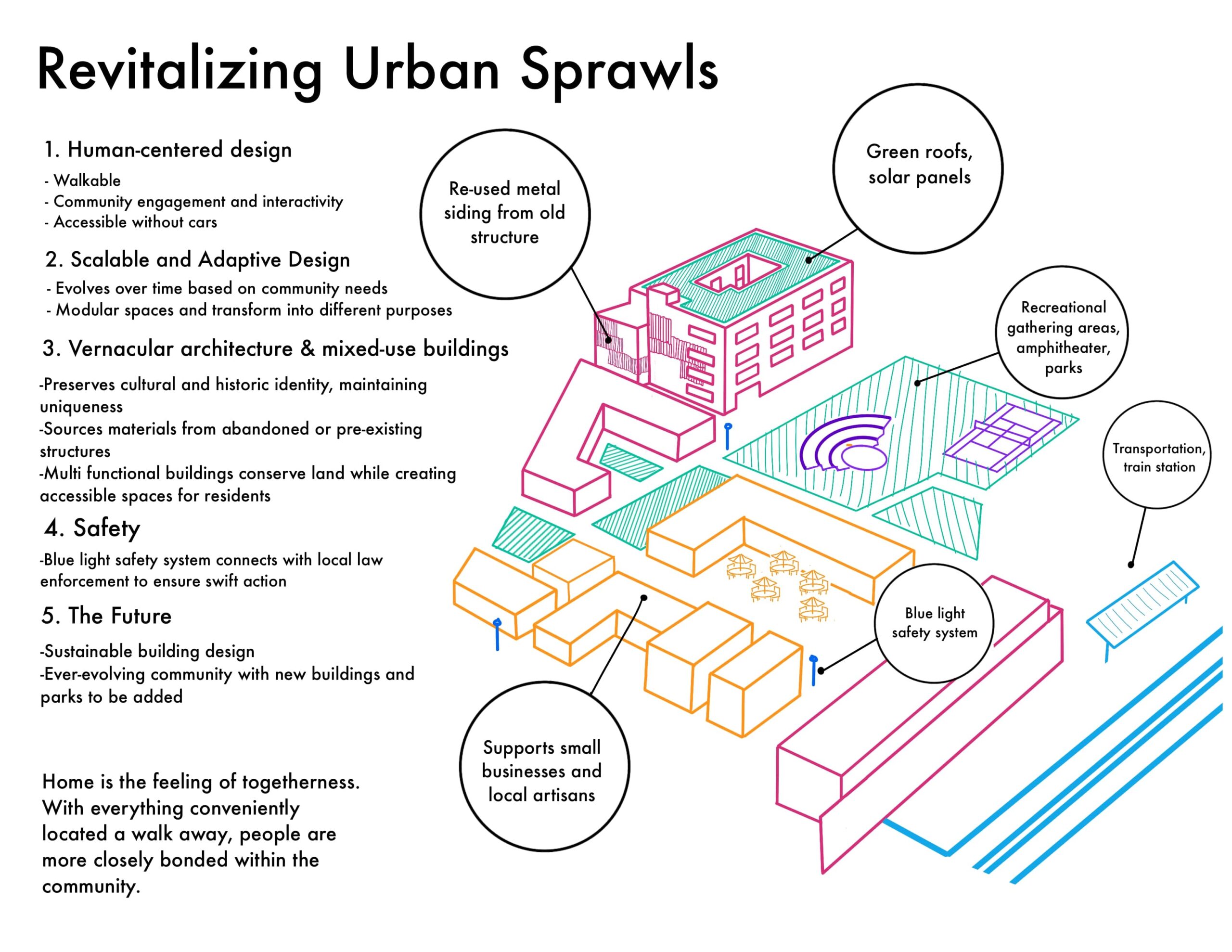Honorable Mention


Angelina Lu, grade 11
Lower Merion High School, Ardmore, PA
Many new developments in America prioritize cars over people, creating disconnected suburbs, poor walkability, and underutilized spaces. This isolates residents and weakens community bonds. Improving accessibility, integrating communal areas, and utilizing adaptive reuse architecture builds human connections to create vibrant, inclusive environments. My design repurposes pre-existing structures into pedestrian-friendly, multipurpose spaces. Using adaptive reuse and vernacular architecture, parks and pavilions would intertwine with buildings. Walkable pathways would connect markets, workspaces, businesses, religious buildings, and housing units. Residents would thrive in a dynamic, ever-evolving neighborhood where their needs are located walking distance away. Tight-knit communities with gathering spaces encourage social connectivity for all ages by incorporating accessible infrastructure that promotes walking and biking. Urban sprawls across the country could benefit from this human-centric approach, which sets up residents for a sustainable, lively future by providing opportunities to connect with each other and with nature.